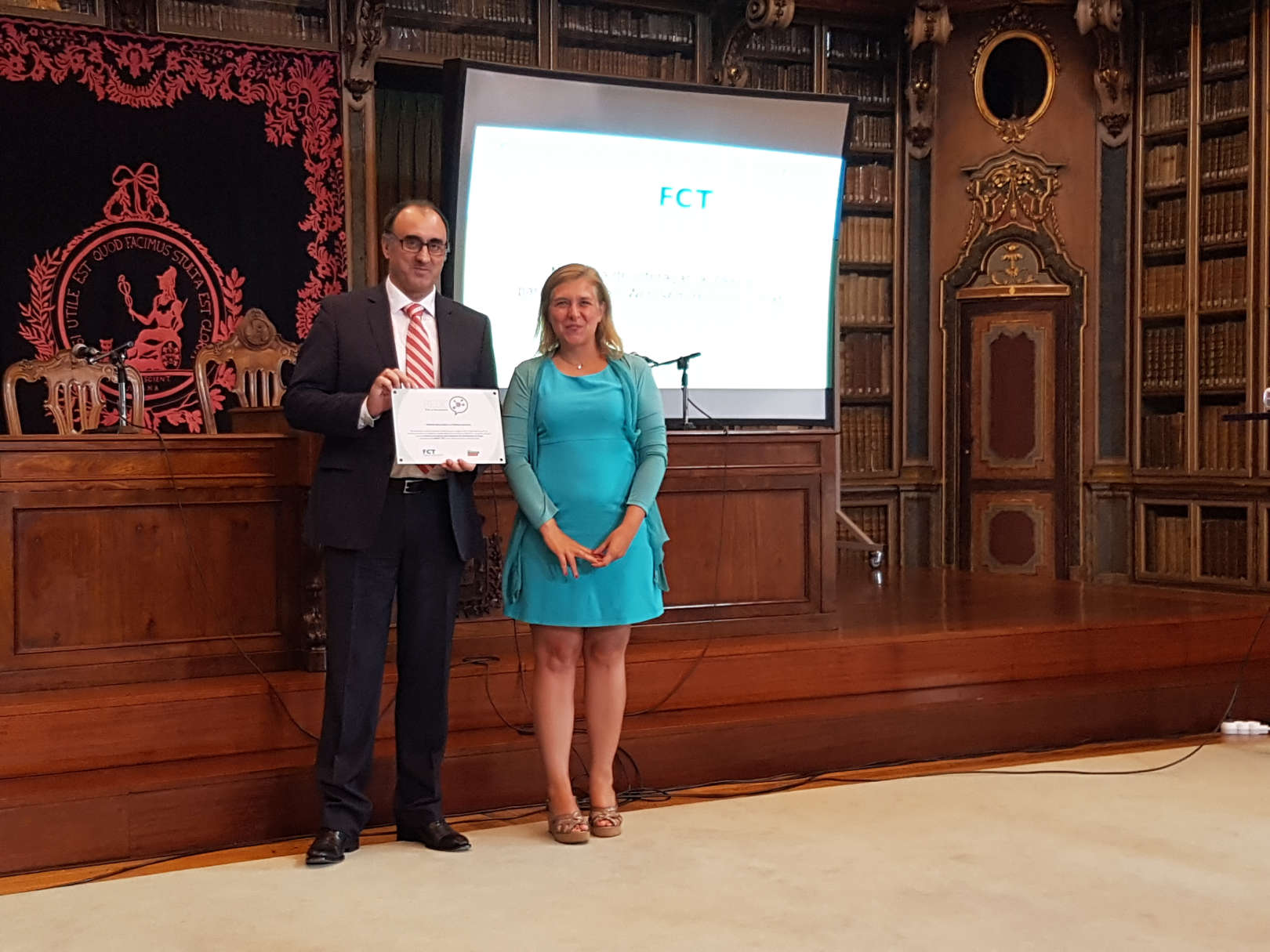INESC TEC wins two Digital Inclusion and Literacy Awards
Two projects led by INESC TEC researchers received the “Digital Inclusion and Literacy Award”, sponsored by the Portuguese funding agency Fundação para a Ciência e Tecnologia (FCT). The award ceremony was held on 13 September at the Lisbon Academy of Sciences.
15th September 2016
The first work awarded is the Integrated System for Increasing Blind autonomy, led by João Barroso, researcher at INESC TEC’s Centre for Information Systems and Computer Graphics (CSIG). This project constitutes an advance in terms of technical aids for the visually impaired which allow them to increase their autonomy on a daily basis.
The project – which brings together researchers from INESC TEC and the University of Trás-os-Montes and Alto Douro (UTAD), where João Barroso teaches – combines emerging technologies that have led to a solution which provides a perception of surroundings and allows the visually impaired to interact more easily with the environment. This is not possible with techniques currently used, which are specific to certain tasks and oftentimes do not take into consideration ergonomic and technological ubiquity issues.


The prize includes the installation of a demonstrator for disseminating technology in a public place. The goal with this installation is to create accessible pathways to disseminate the system’s potential and enable experimentation with blind people, thereby broadening the study on system usability and adapting to the needs and expectations of users.
This project was the result of three others which also involved researchers from INESC TEC and UTAD: the SMARTVISION – Active Vision for the Blind, the BLAVIGATOR - A cheap and reliable navigation aid for the blind, both funded by the FCT, and CE4BLIND – Context Extraction for the blind using computer vision. The latter is still ongoing and is a collaboration with the University of Texas and ACAPO (the Portuguese association for the visually impaired). As part of these projects, it was possible to develop various technologies which have increased the autonomy and quality of life of the visually impaired, including different sensors, GPS, RFID, wireless triangulation signals, an artificial vision module or even a first version of an electronic cane using RFID tag reading.

The second winning project is led by Tânia Rocha, also a researcher at CSIG and lecturer at UTAD. Titled “Accessible interaction metaphor for web navigation without using text”, the goal with this project was to allow all people to use the Web, regardless of their literacy level, as well as to develop a universal interface to access the Web, presenting a search alternative that does not require.
Text is the most common way of accessing content on the Internet. However, this limits people with reading and writing difficulties. For that reason, the researchers developed a web application, supported by Youtube, with search by category functions with audio help. More specifically, users click on icons representing categories rather than inserting a keyword in the search box. That way, the users can have access to all videos on Youtube.


João Barroso and Tânia Rocha represented INESC TEC and UTAD in the award ceremony.
The INESC TEC researchers mentioned in this news piece are associated with UTAD.
INESC TEC, September 2016


